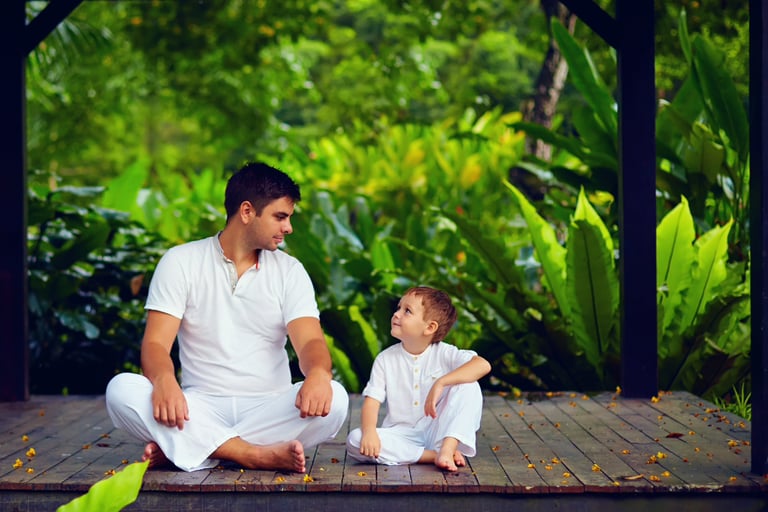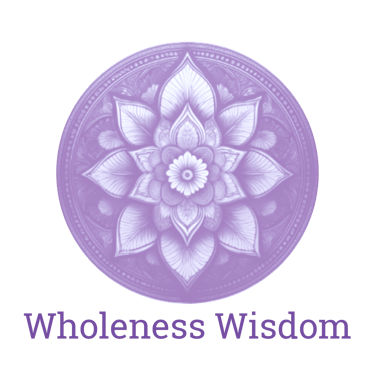Healing Through Inner Child Self Inquiry
A Guided Meditation Practice
4/8/20256 min read


We often avoid parts of ourselves that need looking at—especially those parts that carry the memories, emotions, and beliefs formed in our earliest years. We can imagine these are held by an “inner child”. While of course this doesn’t refer to a real child inside of us, it symbolizes the tender, vulnerable aspects of ourselves that cause us to react when we associate situations with hurts from the past.
Working with the inner child is a profound way to access the emotional wounds and wisdom that shape our beliefs and behaviors as adults.
Connecting with Your Inner Child Is Useful to Evolve and Grow
The inner child represents more than just memories—it is a bridge to understanding how unresolved emotions affect us. When we acknowledge, welcome, and remain present with these in the space of awareness, we unveil emotional freedom and greater resilience. By connecting with ourselves in this way, we reclaim parts of ourselves that may have been avoided or forgotten, allowing us to live more authentically, with self-compassion and joy.
Healing the Inner Child
Offers Benefits Such As…
Emotional Healing
Resolution of early wounding allows us to process emotions that may have been repressed for years.
Self-Compassion
Connecting with the inner child helps us offer ourselves the attention, affection, and understanding we may not have received growing up.
Reclaiming Creativity
Welcoming these parts can reignite lightness and playfulness that may have been stifled by the weight of life's challenges.
Healthier Relationships
By addressing childhood patterns, we improve how we relate to others, fostering deeper intimacy while reacting less to what used to be triggering.
The Inner Child Exposed
Unresolved Emotions and Beliefs
are Alive In The Body
Ten Common Self-Defeating Ways
The Inner Child Reacts
Fear of Rejection or Abandonment
Anxiety or overreaction when someone doesn’t reply to messages or seems distant.
Overreaction to Criticism or Conflict
Defensive, angry, or shutting down when faced with feedback or conflict.
People-Pleasing
Saying "yes" when you want to say "no," or struggling to set boundaries.
Clinging to Unhealthy Relationships
Staying in toxic relationships out of fear of being alone.
Emotional Reactivity
Overreacting to minor frustrations with exaggerated emotional responses.
Perfectionism
A relentless drive to be perfect, coupled with the fear of making mistakes or being criticized.
Difficulty Expressing Emotions
Avoiding vulnerability or shutting down emotionally.
Overdependence on Validation
Constantly seeking approval or reassurance from others.
Avoidance of Difficult Emotions
Using distractions (e.g., food, alcohol, shopping, work) to numb feelings.
Self-Sabotage or Fear of Success
Undermining your own success or avoiding opportunities due to fear of standing out.
These emotional patterns often stem from early childhood experiences. Understanding them is the first step toward healing and transformation.
A Guided Meditation
To Connect With Your Inner Child
Use This Meditative Inquiry to Integrate Reactivity Into Wholeness
Begin by finding a comfortable space and settling into a relaxed position. Take a deep breath, close your eyes, and let go of any distractions. In this meditation, we will guide you through the process of meeting your inner child, holding space for them, and offering them the healing and compassion they need.
1. Connecting with Your Inner Child
Begin by bringing your awareness to the younger version of yourself—the one who may carry feelings of fear, sadness, or anger. Visualize this child and notice how they look, what they’re holding, and how they feel.
Welcome this part of yourself with kindness and curiosity, without judgment.
Pause for reflection.
2. Giving a Voice to the Inner Child
Invite this child to speak. Ask them, "What is it like for you? What are you feeling right now?" Be patient and let them express themselves freely. You can ask gentle questions like, “What do you need from me?” or “Show me what you’re feeling.”
Pause for silence.
3. Understanding the Meaning Beneath the Feelings
Gently inquire, “What does this feeling or experience mean to you?” Ask what beliefs or stories this child has formed about the world. Allow these beliefs to surface without judgment, recognizing that these views are simply part of the inner child's experience.
Pause for reflection.
4. Holding the Inner Child in Compassionate Caring Awareness
Invite compassion to be present here with yourself and your inner child. Notice the awareness that is in and through and around in all directions. In this presence, offer comfort in simply being present and aware, and extend care by expressing that their feelings are valid.
Gently remind them, “You did the best you could with the resources you had at the time," and "It’s okay to rest now.”
Pause for silence.
5. Creating a Safe, Peaceful Space
Guide your inner child to a peaceful place—maybe a sunny garden, a quiet beach, or a meadow. Let them feel safe, calm, and free. Encourage them to explore this peaceful space and notice how it feels.
Pause for silence.
6. Challenging Old Beliefs and Introducing New Possibilities
Ask your inner child to reflect on the beliefs they hold. Offer them new, loving perspectives: “It’s okay to feel strong emotions,” or “You are not alone; love is always around us, supporting all of life.” Gently challenge old fears and beliefs, and offer the wisdom you’ve gained over the years.
Pause for reflection.
7. Relaxing into New Understanding
Invite your inner child to relax into these new understandings. Let them feel the peace of knowing they no longer need to hold onto past fears or beliefs. Encourage them to rest and integrate this new sense of ease and safety.
Pause for silence.
8. Merging the Past with the Present
As your inner child integrates these new truths, invite them to grow and merge with your present self. Feel the wisdom and love from your past child flowing into your present being, creating a sense of unity and strength.
Pause for silence.
9. Expanding into Oneness
Finally, allow your inner child to merge fully with your present self, feeling the peace and love expanding through your entire being. Recognize that you are whole—integrating past experiences with your current awareness, creating a sense of completeness.
Pause for silence.
Closing
Slowly bring your attention back to the present moment. Take a deep breath and gently open your eyes, knowing that you’ve just opened a powerful space for resolution and dissolving of old patterns. All of your parts can rest in the presence of awareness that is always with you, through you— this awareness is safe.
While working with the inner child is a deeply transformative practice, it is important to remember that true healing comes from integrating this work into our daily lives. One of the most powerful tools we have is awareness—simply resting in the presence of awareness, noticing the small moments throughout the day, and recognizing the parts of ourselves that arise.
The dialogue with our inner child is valuable because it helps us engage with the deeper parts of ourselves that need attention. However, the most powerful healing occurs when we rest in the awareness of these parts, giving them the space to experience the presence we’ve cultivated as adults. This process invites healing by allowing our inner child to experience the peace, wisdom, and presence that we have learned to embody through life’s challenges.
By continuing this practice of both inner dialogue and awareness, we invite profound transformation into our lives, creating space for growth, healing, and the integration of all parts of ourselves. Healing our inner child allows us to live more fully, embracing our wholeness with compassion, love, and presence.
Resolving Fears With Awareness


























The Power of Inner Dialogue and Resting in Awareness


